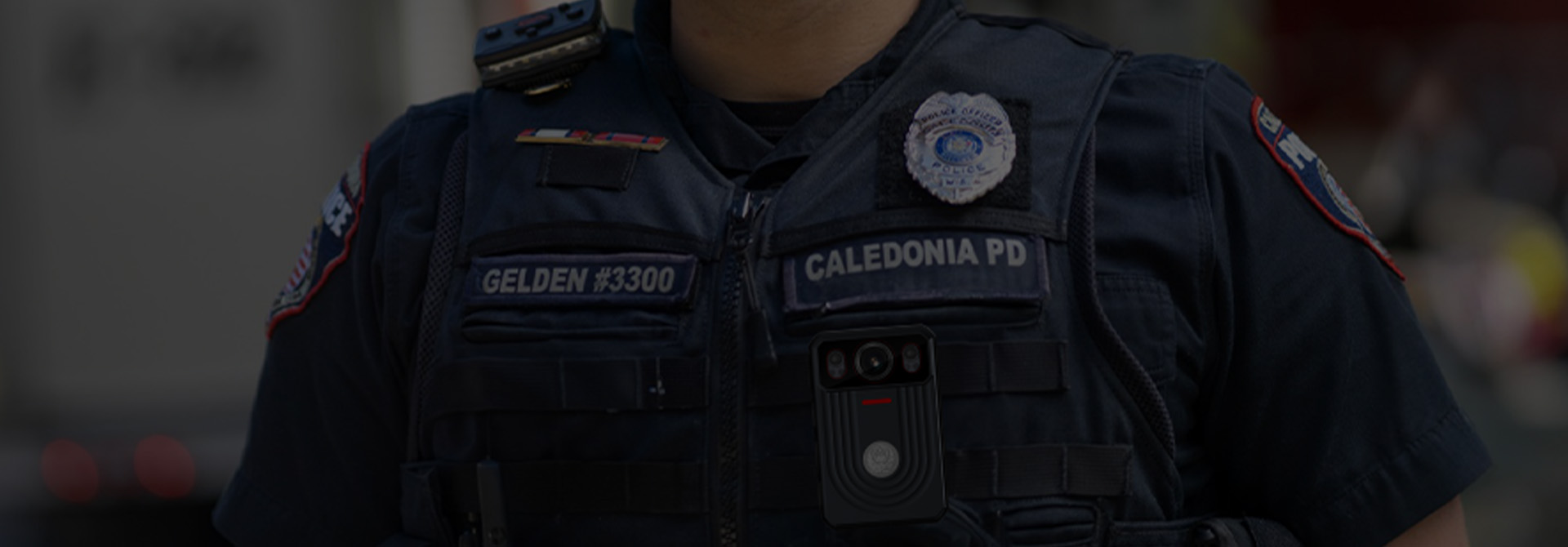Police body cameras have become increasingly prevalent in law enforcement agencies around the world. These small, wearable devices are designed to record audio and video footage of interactions between police officers and civilians. The implementation of body cameras has generated significant discussions and debates regarding their benefits and drawbacks. In this essay, we will explore the pros and cons of police body cameras, examining their potential advantages in terms of accountability, transparency, and evidence gathering, as well as the potential challenges they may present in terms of privacy concerns, selective recording, and resource allocation.

Pros of Police Body Cameras
Accountability and Professionalism:
Police body cameras provide increased accountability within law enforcement by recording encounters and offering an objective record of officer conduct. This ensures officers adhere to department policies, procedures, and legal standards. The knowledge of being recorded acts as a deterrent against misconduct, encouraging professionalism and responsible behavior among officers.
Transparency and Trust:
Body cameras play a vital role in promoting transparency between law enforcement agencies and the communities they serve. The mere presence of these cameras reassures community members that their interactions with officers are being recorded, creating a sense of accountability. This knowledge that encounters are being captured and can be reviewed if needed cultivates trust among individuals, as they feel their concerns and experiences are being taken seriously.
The transparency provided by body cameras holds both officers and civilians accountable for their actions. Officers are more aware of their behavior and are inclined to act professionally, knowing that their actions are being documented. Similarly, civilians are also conscious of their actions, leading to a more respectful and cooperative approach during interactions with law enforcement.
By fostering transparency and accountability, body cameras contribute to a more equitable and fair approach to policing. Communities can have confidence that their experiences are accurately represented, and any concerns or complaints can be thoroughly investigated using the recorded footage. Ultimately, the presence of body cameras builds trust, enhances community-police relationships, and promotes a shared responsibility for maintaining law and order.
Evidence Gathering:
Body camera footage holds significant value as evidence in investigations and legal proceedings. It offers an unbiased and objective account of events, allowing for a thorough and impartial evaluation of officer conduct. This evidence plays a crucial role in upholding the integrity of the justice system by ensuring a fair and accurate determination of guilt or innocence.
The use of body camera footage helps prevent wrongful convictions by providing a verifiable record of what transpired during an incident. It serves as a reliable source of information that can corroborate or contradict witness testimonies, resulting in a more reliable and just outcome.
Moreover, body camera footage protects the rights of both officers and civilians involved in incidents. It provides an objective record that can validate or challenge claims made by either party. This evidence helps ensure that the rights of all individuals are respected and that the truth is revealed.
In summary, body camera footage serves as invaluable evidence in investigations and legal proceedings. Its unbiased nature enables an impartial evaluation of officer conduct, contributes to the integrity of the justice system, helps prevent wrongful convictions, and protects the rights of officers and civilians alike involved in incidents.

Training and Evaluation:
The recorded footage from body cameras serves as a valuable resource for training purposes within law enforcement agencies. By reviewing and analyzing the encounters captured on camera, agencies can identify areas for improvement in officer training, tactics, and procedures. This proactive approach to utilizing body camera footage helps enhance the professionalism of officers and contributes to the continuous improvement of policing practices. It allows agencies to identify strengths and weaknesses, learn from real-life scenarios, and implement necessary changes to ensure officers are better equipped to handle future situations. By leveraging the recorded footage for training, law enforcement agencies can foster a culture of learning, adaptability, and professionalism among their personnel.
Cons of Police Body Cameras
Privacy Concerns:
While police body cameras offer numerous benefits, one of the primary concerns surrounding their use is the potential invasion of privacy. These cameras capture footage in a wide range of settings, including private residences and sensitive areas. Inadvertently recording individuals who are not directly involved in an incident raises significant privacy concerns and can violate their rights.
Striking a delicate balance between maintaining public accountability and respecting privacy rights is a complex challenge. Clear policies and guidelines must be established to address these concerns. This includes defining the circumstances under which body cameras should be activated and deactivated, as well as outlining protocols for handling and storing recorded footage. Ensuring that officers are adequately trained in the proper use of body cameras and understand the importance of respecting privacy rights is also crucial.
Additionally, transparency and open communication between law enforcement agencies and the communities they serve are vital. Engaging in public discourse and seeking input from community members can help shape policies that navigate the intricate landscape of privacy and accountability.
In conclusion, while police body cameras have their merits, the potential invasion of privacy is a significant concern. Striking the right balance between maintaining accountability and safeguarding privacy requires clear policies, training, and open dialogue to address these complexities effectively.
Selective Recording and Bias:
Another notable concern surrounding police body cameras is the potential for selective recording and bias. Officers have the discretion to activate or deactivate their body cameras, which raises questions about the objectivity and completeness of the recorded footage. This control over camera activation introduces the possibility that officers may intentionally or unintentionally manipulate the recording to present a biased version of events.
This concern undermines the very purpose of body cameras, which is to provide transparency and accuracy in documenting police interactions. Selective recording can create gaps in the footage, omitting crucial moments or context that could be pertinent to an incident. Such omissions may impact the ability to fully evaluate an officer's actions and may hinder the fair assessment of an incident.
To address this concern, robust policies and protocols should be established to minimize the potential for selective recording. This may include clear guidelines on when body cameras should be activated, guidelines for disciplinary action if an officer fails to comply with policies, and regular auditing of camera usage to ensure compliance.
Additionally, technological advancements such as automatic recording triggers, such as when a weapon is drawn or when lights and sirens are activated, can help reduce the reliance on officer discretion and enhance the objectivity of the recorded footage.
In summary, the possibility of selective recording and bias is a valid concern when it comes to police body cameras. Establishing comprehensive policies, implementing technological solutions, and promoting accountability can help alleviate these concerns and maintain the integrity of the recorded footage.
Data Storage and Management:
The widespread adoption of police body cameras brings about the challenge of effectively managing the substantial amount of data they generate. Storing, managing, and protecting this data requires the development of robust protocols and infrastructure.
Law enforcement agencies must invest in secure data storage systems that can handle the large volume of footage recorded by body cameras. This includes implementing measures to ensure the integrity and confidentiality of the data, protecting it from unauthorized access or tampering. Additionally, agencies need to establish efficient retrieval mechanisms to quickly access specific footage when needed for investigations or legal proceedings.
The cost associated with the infrastructure required for data management is another challenge. Agencies must allocate resources to acquire appropriate technology and employ personnel skilled in data management and cybersecurity to handle the vast amounts of data generated by body cameras. This investment is necessary to ensure the reliable storage, organization, and retention of the recorded footage.
Moreover, agencies must comply with applicable laws and regulations regarding data retention periods. Establishing clear guidelines on how long footage should be retained, as well as procedures for securely disposing of data when it is no longer needed, is essential to protect privacy rights and maintain legal compliance.
Resource Allocation:
Equipping law enforcement agencies with body cameras involves substantial financial costs. The initial purchase of the cameras, along with the ongoing expenses related to data storage, maintenance, and training, can strain agency budgets. Smaller agencies with limited resources may face challenges in implementing and sustaining body camera programs, potentially leading to disparities in accountability and transparency across different jurisdictions.
Police body cameras have both pros and cons that must be carefully considered. The benefits of accountability, transparency, evidence gathering, and training are significant, as they promote responsible behavior among officers, enhance community trust, and contribute to a fair justice system. However, concerns regarding privacy, selective recording, data management, and resource allocation must be addressed to ensure the effective and ethical use of body cameras. Striking the right balance between accountability and privacy is crucial, and law enforcement agencies must establish clear policies, guidelines, and training protocols to maximize the benefits while minimizing the potential drawbacks. Ultimately, the successful implementation of police body cameras requires ongoing evaluation, adaptation, and open dialogue between law enforcement, communities, and policymakers to navigate the evolving landscape of technology and its impact on policing.


 French
French German
German Arabic
Arabic Italian
Italian Spanish
Spanish Japanese
Japanese Persian
Persian Korean
Korean Chinese (Simplified)
Chinese (Simplified)









